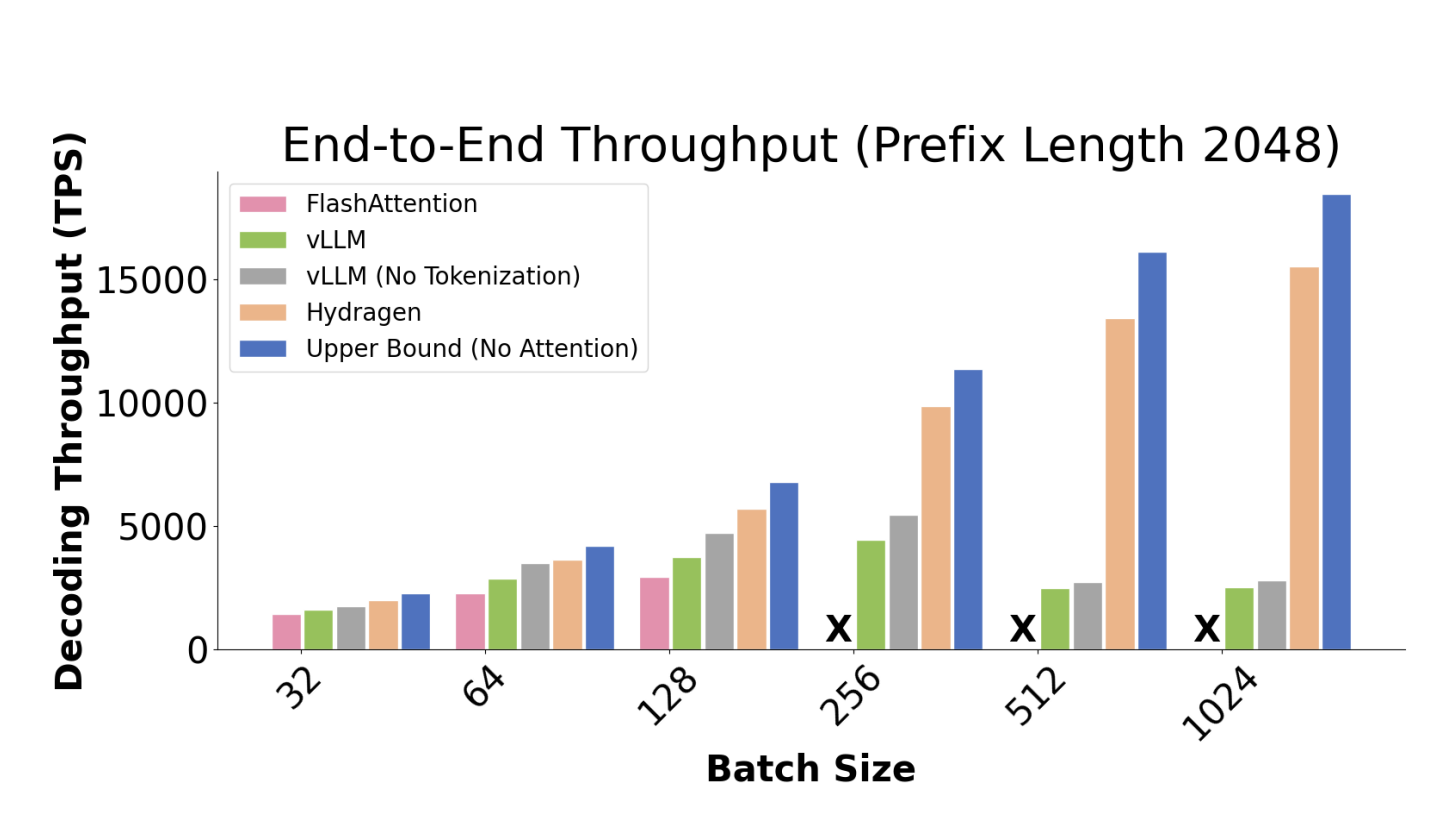Meet Hydragen: A Hardware-Aware Exact Implementation of Attention with Shared Prefixes

As artificial intelligence continues to permeate every facet of technology, optimizing the performance of large language models (LLMs) for practical applications has become a pivotal challenge. The advent of Transformer-based LLMs has revolutionized how we interact with AI, enabling applications that range from conversational agents to complex problem-solving tools. However, the widespread deployment of these models, especially in scenarios where they process batches of sequences sharing common prefixes, has highlighted a significant efficiency bottleneck. Traditional attention mechanisms, while foundational to the success of LLMs, often struggle with computational redundancy when sequences within a batch share a starting point. This inefficiency strains computing resources and limits the scalability of LLM applications.
A groundbreaking approach by the research team from Stanford University, the University of Oxford, and the University of Waterloo named Hydragen has been introduced to address this challenge. Hydragen is ingeniously designed to optimize LLM inference in shared-prefix scenarios, dramatically improving throughput and reducing computational overhead. By decomposing the attention operation into separate computations for shared prefixes and unique suffixes, Hydragen minimizes redundant memory reads and maximizes the efficiency of matrix multiplications—a process better aligned with the capabilities of modern GPUs. This decomposition allows for the batching of attention queries across sequences when processing the shared prefix, significantly enhancing computational efficiency.
Hydragen’s innovation lies in its two-fold approach. Firstly, it decomposes the attention mechanism to address the shared prefixes and the distinct suffixes of sequences separately. This strategy cleverly circumvents the inefficiencies of traditional attention computations, which treat each sequence independently, leading to unnecessary repetition of computations for the shared segments. Secondly, Hydragen introduces inter-sequence batching for the shared prefix, leveraging the uniformity of this segment across sequences to perform a single, consolidated attention computation. This method reduces the workload on the GPU and ensures that the computational power of tensor cores is used to its fullest potential.
The impact of Hydragen is profound, offering up to 32 times improvement in end-to-end LLM throughput compared to existing methods. Such performance enhancement is particularly significant as it scales with both the batch size and the length of the shared prefix, showcasing Hydragen’s adaptability to various operational scales and scenarios. Moreover, Hydragen’s methodology extends beyond simple prefix-suffix splits, accommodating more complex, tree-based sharing patterns common in advanced LLM applications. This flexibility allows Hydragen to significantly reduce inference times in various settings, from chatbot interactions to competitive programming challenges.
The results of implementing Hydragen are compelling, underscoring its capability to transform LLM inference. Not only does Hydragen dramatically increase throughput, but it also enables the efficient processing of very long shared contexts with minimal throughput penalty. This means that LLMs can now handle more extensive and context-rich prompts without a corresponding increase in computational cost or time. For instance, in tasks involving long document question answering, Hydragen demonstrates its superiority by processing queries in significantly less time than traditional methods, even when dealing with documents with tens of thousands of long tokens.
In conclusion, the development of Hydragen marks a significant milestone in optimizing LLMs for real-world applications. The key takeaways from this research include:
- Innovative Decomposition: Hydragen’s unique attention decomposition method significantly enhances computational efficiency for batches of sequences with shared prefixes.
- Enhanced Throughput: Hydragen demonstrates up to a 32x improvement in throughput, setting a new standard for LLM performance, especially in large-batch and shared-prefix scenarios.
- Versatile Application: The methodology is adaptable to complex sharing patterns, making it suitable for a wide range of LLM applications, from conversational AI to intricate problem-solving tools.
Check out the Paper. All credit for this research goes to the researchers of this project. Also, don’t forget to follow us on Twitter and Google News. Join our 36k+ ML SubReddit, 41k+ Facebook Community, Discord Channel, and LinkedIn Group.
If you like our work, you will love our newsletter..
Don’t Forget to join our Telegram Channel
![]()
Hello, My name is Adnan Hassan. I am a consulting intern at Marktechpost and soon to be a management trainee at American Express. I am currently pursuing a dual degree at the Indian Institute of Technology, Kharagpur. I am passionate about technology and want to create new products that make a difference.



